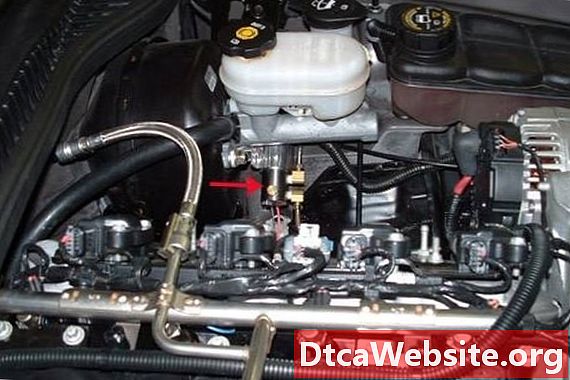
Contenu

Jump-starting a car with a solenoid, which is a switching mechanism that s a 12-volt current to the starter, should be approached with caution. When the car battery is dead, turning the ignition switch may cause a rapid clicking sound. This is the solenoid opening and closing as it tries to deliver current to the starter. If the solenoid is bad, you wont hear any clicking. Bypassing the solenoid may enable you to jump-start your car, but precautions are necessary. This article explains how to do it and offers safety tips.
Step 1
Locate the solenoid on the cars electrical system. It is typically a small cylinder or box near the starter or battery cables.
Step 2
Find the primary side of the solenoid with a small terminal that has a red or yellow wire attached to it.
Step 3
Connect one of the positive (red) clamps on the jumper cables to the vehicle with the good battery and attach it to the positive terminal of that car. The positive terminal should have a red battery cable attached to it and a plus sign (+) either on the battery terminal or the battery housing on top next to the terminal. Use the bristle brush or a piece of steel wool to clean the terminals, if necessary. If you are unsure about which terminal is which, do not attempt to jump start the car.
Step 4
Connect the positive red clamp on the other end of the jumper cables to the small terminal on the solenoid.
Step 5
Clamp one end of the negative (black) jumper cables to the car with the good battery and attach it to the negative battery terminal. The negative terminal has a minus sign (-) on or near the terminal post.
Step 6
Extend the remaining negative (black) clamp to the car with the dead battery and clamp it to a metal part of the engine--away from any moving parts such as fan belts. One important note, do not connect the final negative clamp to the negative terminal of the bad battery as an explosion could occur.
Step 7
Turn the ignition key in the car with the dead battery after all individuals have stepped away from the open hoods of the two vehicles. The car should start if the battery is not shorted or burned out internally.
Step 8
Reverse the steps above to remove the jumper cables from the two cars while both are still running, taking care not to let the jumper cable clamps touch each other while either end is connected to a vehicle.
Take the vehicle to a trained mechanic who can run diagnostic checks on the electrical system to determine if your problem involves more than a weak or dying battery.
Tip
- Wear heavy work gloves to protect your hands, keep them clean, and prevent electrical shock when working around batteries.
Warning
- Batteries can explode from a single spark off a jumper cable. Never connect the negative (-) clamp on a jumper cable to a dead battery. Instead, ground the negative cable by clamping it to a metal part of the engine.
Items you will need
- Jumper cables
- Steel wool or metal bristle brush
- Safety goggles
- Heavy work gloves


